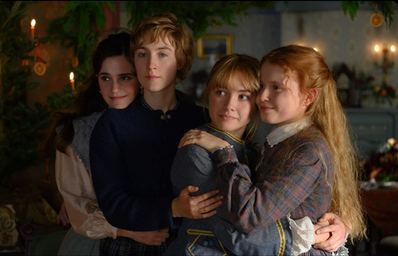Feminine rage has, for lack of a better word, become all the rage. With actresses like Florence Pugh and Mia Goth redefining feminine rage through their acting performances, and movies like Hereditary and Hidden Figures making it suspenseful and powerful, this rage is getting acknowledged in the way it should be: as an art form. But what does “feminine rage” mean, and why is it important for us to acknowledge the roots of this portrayal of women?
Feminine rage is unique to the societal struggles of women. It is the desire to be heard and understood with a brash presentation. We should all be familiar at this point in our lives with the expected gender roles of women; as they heavily dominate a girl’s life, largely today. The idea is to always be nurturing, kind, motherly and emotional. Never has it been to express anger or frustration, especially with men. However, films that represent this rage in an honest way add a new element to feminine nature that hasn’t been previously considered.
Feminine rage is entirely different from the hysteria portrayed by male dominant entertainment. It is not just about a woman getting upset because it’s “that time of the month”, as some men would like to say. It represents something deeper: a frustration with the idea that we are expected to act a certain way and be something we aren’t.
One of my favorite examples of this feminine rage is Taraji P. Henson’s portrayal of Katherine in Hidden Figures. After deep frustration with being forced to used segregated bathrooms that weren’t even in the building while working for NASA, she delivers her “drinking coffee from a pot none of you want to touch” monologue. Most of us are familiar with this speech through TikTok and other social media platforms, but its true power has been lost through an over-consumptive social media lens. Taraji P. Henson playing Katherine brought awareness to a very real and unique feeling that women of color experienced during that time period.
This concept of feminine rage is not new. In fact, historical female poets like Emily Dickinson and Sylvia Plath have captured this rage through their work. Poems like “Daddy” by Sylvia Plath and “My Life had stood — a Loaded Gun” by Emily Dickinson bring light to feelings of anger that couldn’t be properly expressed because of socially constructed gender norms. If you’re a poetry fanatic like myself, I would definitely recommend checking these poems out, because they are truly wonderful. Nowadays, we get to see it in a more modern way through film, TV, and social media. Women are not only becoming more comfortable with expressing their rage, but are starting to appreciate it as a part of themselves.

If you want to know more about feminine rage in film or see these powerful scenes, you should check out movies like Midsommar, X, Pearl, Hereditary, Hidden Figures, Girl Interrupted, and Little Women. These movies are all incredible and show the experience of rage and girlhood. This world of feminine rage is a beautiful one. It speaks to the human experience, and that women are allowed to be angry at the world society has constructed for them. We should all be consuming more media that accurately portrays these feelings in women.
Can’t get enough of HC UMass Amherst? Be sure to follow us on Instagram, listen to us on Spotify, like us on Facebook, and read our latest Tweets!



